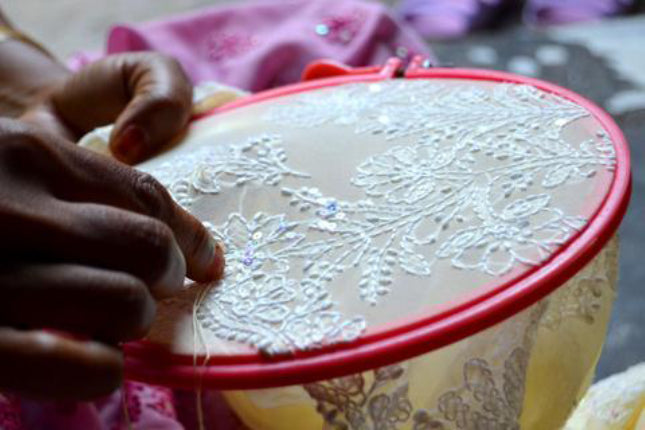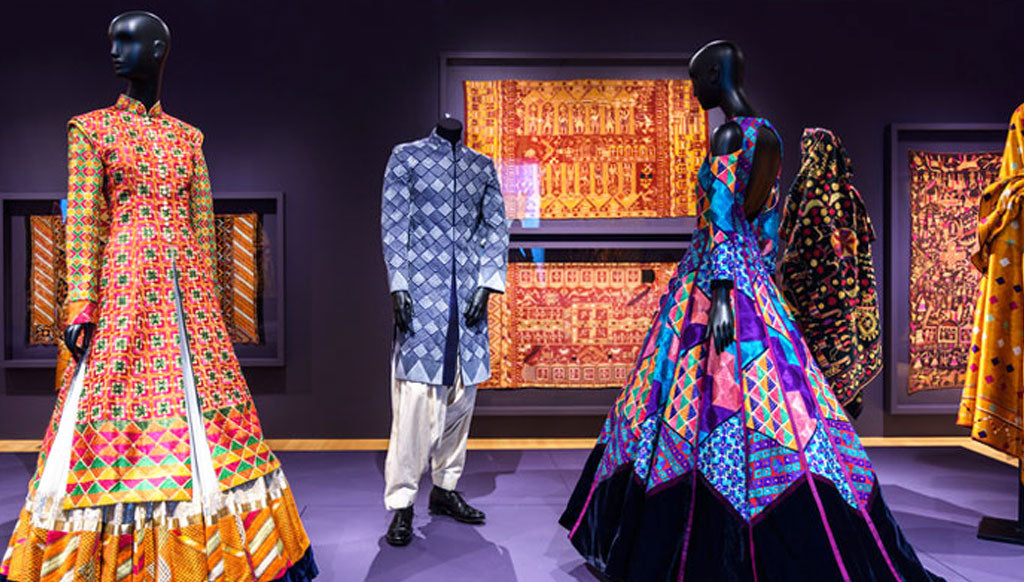Today we are going to explore one of the most famous woven fabrics from the state which is highly rich in culture and heritage, the land for rasagullas and fish-eaters, West Bengal.
One of the things that readily come to mind when one thinks of Bengal is the sarees that the women wear in that region. Among all the types of elegant sarees from Bengal, a Dhakai jamdani saree can be considered the epitome. Whether figured or flowered, jamdani is a woven fabric in cotton, and it is undoubtedly one of the varieties of the finest muslin.
Origin and History
Jamdani is a vividly patterned, sheer cotton fabric, traditionally woven on a handloom by craftspeople and apprentices around Dhaka, Bangladesh, Jamdani is of Persian origin, wherein ‘Jam’ means flower and ‘Dani’ means a vase or container. This fabric is world-famous for its eye-catching, artistic and expensive ornamental fabric.
Well, the origin of Jamdani is still a mystery, it is strongly believed that Jamdani weaving tradition is of Bengali origin. It's developed as an industry that has been noted in Kautilya’s Arthashastra,where it is mentioned that this fine muslin cloth was used in Bangla and Pundra.In the first half of the nineteenth century, James Taylor described the figured or flowered jamdani; in the late nineteenth century, T. N. Mukharji referred to this fabric as jamdani muslin.
The centuries-old Jamdani weaving tradition originated in Dhaka, Bangladesh and is today carried forward in West Bengal. These are feather-light and sheer sarees, with fine motifs woven all over the body giving it a luxurious and grand finish.
Jamdani weaving process
Jamdani is a time-consuming and labor-intensive form of weaving because of the richness of its motifs, which are created directly on the loom using the discontinuous weft technique. Weaving is thriving today due to the fabric’s popularity for making saris, the principal dress of Bengali women at home and abroad.
The Jamdani Sari is a symbol of identity, dignity and self-recognition and provides wearers with a sense of cultural identity and social cohesion. The weavers develop an occupational identity and take great pride in their heritage; they enjoy social recognition and are highly respected for their skills. A few master weavers are recognized as bearers of the traditional Jamdani motifs and weaving techniques and transmit the knowledge and skills to disciples.
However, Jamdani weaving is principally transmitted by parents to children in home workshops. Weavers – together with spinners, dyers, loom-dressers and practitioners of a number of other supporting crafts – form a closely-knit community with a strong sense of unity, identity, and continuity.
Colors and Motifs
Jamdani was initially made as a variant of bright but contrasting colors, today’s sarees come with colors outright. There is a popular variant known as half-and-half jamdani that has become rather popular. There can be no denying that the colors and designs have kept on changing over time. In the yesteryears, the motifs were made on grey fabric, but as time went on, the colors of other fabrics were also started to be used. Specifically, in the 1960s, jamdani work on a red-colored fabric became extremely popular
One of the most remarkable things about the motifs on a Dhakai jamdani saree is that they are not sketched on the fabric. Instead, a translucent graph paper is used to draw the motifs on, which are then placed below the warp. These sarees have multicolor linear or floral motifs all over the body and have an exquisite elaborate pallu.
Why Jamdani?
If you thought that sarees are the only thing that is jamdani, you are mistaken. Jamdani is also used to make dupattas, handkerchiefs, and scarves. The sari is woven with cotton and Resham-threads. If you want to go for a traditional look yet keep in terms of modern times, we advise you to go for this sari.
This saree is one of the favorite saris of Bengals in all occasions—be it wedding parties, any Puja and even college farewells! In other words, there’s a jamdani for every one of all ages.

Jamdani and Banarasis
Jamdani and Banarasis go a long way together! One simply cannot miss the Jamdani and brocades of Banaras. The silk Jamdani is a technical variety of brocade traditionally woven in Banaras. It may be considered to be one of the finest products to come out of the Banarasi loom. Here silk fabric is brocaded with cotton and rarely with zari threads.
As you all know, the specialty of the Banarasi saree lies in its use of zari or rich gold and silver-colored thread work on motifs and brocades. Added to this, with the intention to improve the aesthetic appeal, modern-day Jamdani takes the form of cotton and gold thread weaving to create motifs of geometric patterns and floral designs in colorful hues. Jamdani's hand weaving has become a necessary accompaniment of Banarasi Silks today.
Banarasi artisans use the weft technique of weaving, where the artistic motifs are produced by a non-structural weft, in addition to the standard weft that holds the warp threads together. It takes almost a year to weave a Jamdani Saree.
Refer to this source of information about Jamdani and brocades of Banaras: https://purushu.com/2011/08/banarasi-silk-jamdani-and-brocade.html



Khinkhwab Products
Khinkhwab has been inspired by these wonderful weaves always and check out some of our latest fabulous Jamdani collections
Blue Pure Organza Silk Banarasi Jamdani Saree

Baby Pink Pure Organza Silk Banarasi Handloom Saree

If you are looking at supporting handmade and buy Handloom Banarasi silk attires online, you can find them all in this one-stop-shop Khinkhwab - The Essence of Banaras
Like and follow us on Social media: Facebook | Instagram | Twitter | Pinterest






1 comment
Wow!!!!really amazing lists of sarees….this is very useful to the people who doesn’t have any ideas about the saree….the description about the sarees is wonderful…thank you for posting…keep blogging!!